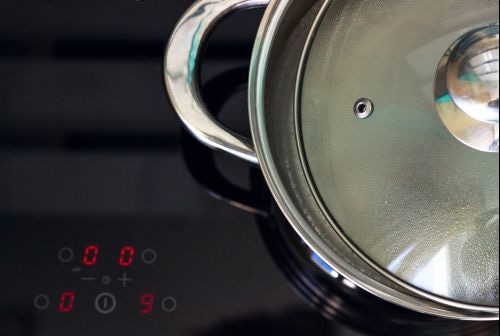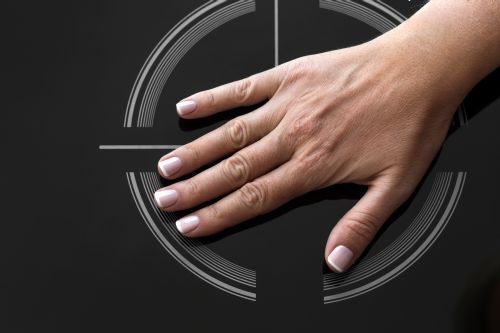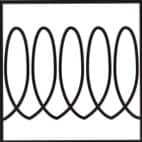What Is Induction Cooking?
Posted on February 08, 2023 By Alison P What Is an Induction Cooktop?
What Is an Induction Cooktop?- What Are the Benefits of Induction Cooking?
- Are Induction Cooktops Safe?
- What's the Best Induction Cookware?
- What Is an Induction Range?
If you've recently been browsing for a new range or cooktop, you've probably seen the word "induction" come up often. You may be curious as to what it means, and how induction cooking works. It may feel risky to venture away from the comfort and predictability of the cooking methods you've known your whole life, but read on and learn more about this amazing cooking method. It's incredibly efficient, it's remarkably safe, and it may be the perfect addition to your kitchen.
What Is an Induction Cooktop?
An induction cooktop is a smooth, level surface with copper coils underneath, and these coils create an alternating current that actually turns pots and pans into their own heat sources. You probably know that friction creates heat; rubbing your hands together makes them warm, and rubbing them together faster makes them even warmer. This is the idea behind induction except, instead of your hands, friction is created inside the metal of the cookware! Without going too deep into quantum mechanics, here's how it works: When an induction burner is powered on, an alternating current begins flowing through its coil. When you place induction-ready cookware on top of the burner, the current will pull the pan's electrons into a formation. The stubborn electrons, being so unapologetically negative (science joke!), resist the formation and this constant push-and-pull creates friction inside the metal. Turning up the current creates more resistance, resulting in more friction and more heat. When you're done cooking, the cookware cools down the moment it loses contact with the current. This is what makes induction cooking so innovative - while gas cooktops or electric cooktops requires turning on a heat source, induction makes a heat source out of the pan itself!
What Are the Benefits of Induction Cooking?
The first perk of induction cooking is its efficiency, both time- and energy-wise. Induction heats up the cookware almost instantaneously, and water can be brought to a boil in just 90 seconds on some models. Induction is also very energy-efficient; food being cooked with induction will receive 90% of the heat generated, compared to 65-70% for electric and 40-55% for gas. Since nearly all the heat is going directly to your food, there's not much heat dissipating into the air, which leads to another plus: a cool, comfortable kitchen throughout your cooking experience. Don't forget to factor in the easy cleaning - since the pan is the only source of heat, there's no risk of food burning onto the cooktop, and the smooth surface easily wipes clean. On a less-practical note, the "Wow, I'm living in the Future!" feeling is a pretty nice benefit, too!
 Are Induction Cooktops Safe?
Are Induction Cooktops Safe?
Unless you've got a pacemaker or similar medical device - in which case you should keep away from induction cooktops while they are in use - cooking on an induction cooktop is actually safer in many ways than other styles of cooking. As we said before, the cookware itself is the only heat source in induction cooking. There are no open flames, so the risk of fire is incredibly low. Since the oven surface does not heat up and the cookware cools the moment the burner is off, the risk of accidentally burning yourself is also low. Each burner also includes a built-in temperature sensor that automatically shuts off the current if the cookware overheats. There's no need to be paranoid about gas fumes, or worry about having left a burner on. And just in case we need to say it, there is absolutely NO evidence that these low levels of electromagnetism are harmful to humans in any way!
What's the Best Induction Cookware?
The best cookware for an induction cooktop meets three conditions: The cookware's bottom must be flat, smooth, and magnetic. You can test out your pots and pans with an ordinary refrigerator magnet - if the magnet sticks to the bottom, it's good to go for induction cooking. Cast iron cookware works great, and enameled cast iron is even better because it's less likely to scratch the surface of the cooktop. Certain varieties of stainless steel work as well. Cookware made of copper, glass, or aluminum unfortunately cannot be used on an induction cooktop. If you're planning to buy induction-ready cookware from a store, it's a good idea to bring a small magnet and test the bottoms before you buy. If you're shopping online or from a catalog, look for cookware with the following symbol:

Enough About Cooktops - What Is an Induction Range?
The term induction range is somewhat of a misnomer. While there are plenty of ovens with induction cooktops, there are no actual ovens that operate with induction cooking. Induction cooking is something that (so far) can only be done on a cooktop.
Now that you're informed about induction cooking, why not browse around for induction options for your kitchen? P.C. Richard & Son offers a great selection of induction stoves and induction cooktops from today's most trusted appliance brands. Not ready to make the full induction commitment? We also carry portable induction hot plates for small-scale induction cooking. Shop P.C. Richard & Son, and join the induction cooking revolution now!